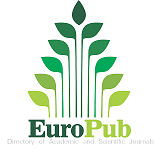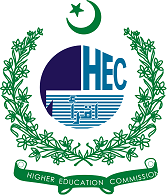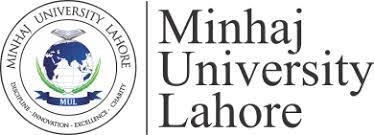Fear, Fair, or Favor? How Senior Journalists Practice Self-Censorship, A Study of Top News Channels in Pakistan
DOI:
https://doi.org/10.58932/MULA0024Keywords:
Pakistan, Professional Journalists, censorships, Self-Censorship, Fear, Favor, FairAbstract
The study investigates the reasons and factors behind self-censorship in Pakistani news channels. The study examines the reasons why and where journalists practice self-censorship due to fear where the censorship is the result of potential favors and where the editorial judgments for self -censorship are professional or fair in nature. The method of inquiry was qualitative. The Researcher conducted semi-statured interviews of thirty senior journalists from the top five news channels of Pakistan. The propaganda model and hierarchical influences model provides the theoretic guideline for the study. The results of the study show that job loss, life threats, family security are the fears factors behind self-censorship; personal belongings, afflictions, and financial benefits are the favors that lead the journalists to practice self-censorship. Findings also indicate that Journalists practice self-censorships in professional ways to avoid conflicts in the society.
References
Akhtar, S. (2000). Media, religion, and politics in Pakistan. Oxford University Press, USA.
Abbasi, I. S., & Al-Sharqi, L. (2015). Media censorship: Freedom versus responsibility. Journal of Law and Conflict Resolution, 7(4), 21-24.
Adnan, R., & Matiullah, J. (2005). Media in Pakistan: Growing Space, Shrinking Freedoms, Annual Report on State of Media Freedom in Pakistan. Retrieved on December, 25, 2007.
Ang, I., & Hermes, J. (1996). Gender and/in media consumption. In J. Curran & M. Gurevitch (Eds.), Mass media and society (pp. 325–347). London: Arnold.
Boyce, C. & Neale, P. (2006) “Conducting in-depth Interviews: A Guide for Designing and Conducting In-Depth Interviews”, Pathfinder International Tool Series
Bourdieu, Pierre. (1996). the Rules of Art: Genesis and Structure of the Literary Field. Stanford, CA: Stanford University Press.
Bennett, P., & Naím, M. (2015). 21st-century censorship. Columbia Journalism Review, 53(1), 14.
Bi, G., & Zeng, Y. (2003). Transforms and fast algorithms for signal analysis and representations. Springer Science & Business Media.
Bagdikian, B. H., Artz, L., Chitty, N., Cowan, G., He, Z., Karim, K. H., & Kellner, D. (2004). War, media, and propaganda: A global perspective. Rowman & Littlefield.
Cohen, Nick. (2015). the Guardian. http://www.theguardian.com/ commentisfree/2015/jan/11/paris-attacks-we-must-overcome-fear- orselfcensorship-will-spread
Çipa, Aleksandër. Deklaratë për shtyp. Dita e miqësisë, Durres. 24 February 2015.
Cronau, P. (1995). Self-censorship: the most insidious gag. Pacific Journalism Review, 2(1), 11–15.
Cook, P., & Heilmann, C. (2013). Two types of self-censorship: Public and private. Political studies, 61(1), 178-196.
Cottle, S., & Rai, M. (2006). Between display and deliberation: Analyzing TV news as communicative architecture. Media, Culture & Society, 28(2), 163–189.
Chomsky, N., & Herman, E. S. (2008). La fabbrica Del consenso. Ovvero la politica dei mass media (Vol. 9). Il saggiatore.
Chaudhary, S., & Tomer, S. K. (2018). Estimation of stress–strength reliability for Maxwell distribution under progressive type-II censoring Scheme. International Journal of System Assurance Engineering and Management, 9(5), 1107-1119.
Gannon, K. (2018). Review of: Harrison, D. and Albanese, P. (2016). Growing Up in Armyville: Canada’s Military Families during the Afghanistan Mission.
Wilfred Laurier University Press. Canadian Journal of Family and Youth/Le Journal Canadien de Famille ET de la Jeunesse, 10(1), 333-337.
Ghafour, G., S. (2016). To report or not to report: Journalists’ view of social media’s role in effecting differential outcomes of two journalists’ murder cases in Kurdistan. (Unpublished Doctor of Philosophy), University of Kansas.
Galtung, J., & Ruge, M. (1981). Structuring and selecting news. In S. Cohen & J. Young (Eds.), the manufacture of news (pp. 52–63). London: Constable.
Herman, E. S., & Chomsky, N. (1988). The political economy of the mass media. Pantheon, New York.
Hayes, A. F., Glynn, C. J., & Shanahan, J. (2005). Willingness to Self-Censor: A Construct and Measurement Tool for Public Opinion Research. International Journal of Public Opinion Research, 299–323. Retrieved from http://ijpor.oxfordjournals.org/content/early/2005/01/01/ijpor.edh073.short.
Hunter, R. (2009). State control and self-censorship in the media after the coup. In The 2006 military takeover in Fiji: a coup to end all coups? (pp. 277–288).
Imam, M.A. et al. (2023) ‘Contextualizing research approaches: The role of Western and Islamic philosophies in shaping methodology and knowledge creation’, Al-Irfan, 8(16), pp. 69–90.
Klaehn, J. (2009). The propaganda model: Theoretical and methodological considerations.
Klaehn, J. (2005). Filtering the news: Essays on Herman and Chomsky's propaganda model.
Lawrence Neuman, W. (2014). Social research methods: qualitative and quantitative approaches. Pearson.
Lee, F. L. F., & Lin, A. M. Y. (2006). Newspaper editorial discourse and the politics of selfcensorship in Hong Kong. Discourse & Society, 17(3), 331–358. https://doi.org/10.1177/0957926506062371
Lee, F. L., & Chan, J. M. (2008). Professionalism, political orientation, and perceived self-censorship: A survey study of Hong Kong journalists. Issues & Studies, 44(1), 205-238.
Morris. (2018). watching our words: Perceptions of self-censorship and media freedom in Fiji. Pacific Media Centre.
Moody, J. L., Oltmans, S. J., Levy, H., & Merrill, J. T. (1995). Transport climatology of
Neuman, D. (2014). Qualitative research in educational communications and technology: A brief introduction to principles and procedures. Journal of Computing in Higher Education, 26(1), 69-86.
Neumann, M., Galushko, M., Karbach, U., Goldblatt, H., Visser, A., Wirtz, M., & Pfaff, H. (2010). Barriers to using psycho-oncology services: a qualitative research into the perspectives of users, their relatives, non-users, physicians, and nurses. Supportive Care in Cancer, 18(9), 1147-1156.
Schimpfössl, E., & Yablokov, I. (2020). Post-socialist self-censorship: Russia, Hungary and Latvia. European Journal of Communication, 35(1), 29-45.
Soengas-Pérez, X. (2013). The role of the Internet and social networks in the Arab Uprisings an alternative to official press censorship. Comunicar, 21(41), 147- 155.
Siraj, S. A., & Hussain, S. (2017). Critical Analysis of Journalistic Autonomy in Pakistan. FWU Journal of Social Sciences, 11(1), 106.
Skjerdal, T. (2010). Justifying self-censorship: A perspective from Ethiopia. Westminster papers in Communication and Culture, 7(2).
Sturges, P. (2015). Limits to freedom of expression? The problem of blasphemy. IFLA journal, 41(2), 112-119.
Skjerdal, T. (2010). Justifying self-censorship: A perspective from Ethiopia. Westminster papers in Communication and Culture, 7(2).
Westminster Papers in Communication and Culture, 7(2), 98–121. Retrieved from
https://www.westminster.ac.uk/data/assets/pdf_file/0006/79971/007WPCCVol7-No2-Terje_Skjerdal.pdf
Wimmer, D. R., & Dominick, R. J. (2011). Qualitative research methods. Mass media research: An introduction, 9, 114-154.
Yeşil & Murat. (2014). the Invisible Threat for the Future of Journalism: Selfcensorship and Conflicting Interests in an Increasingly Competitive Media Environment. International Journal of Business and Social Science, 71-78
Zeveleva, O., Schimpfössl, E., Yablokov, I., Fedirko, T., & Bajomi-Lazar, P. (2020).
Zoonen, L. van. (1996). Feminist perspectives on the media. In J. Curran & M. Gurevitch (Eds.), Mass media and society (pp. 31–52). London: Arnold.




